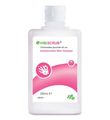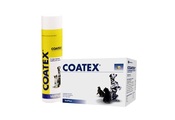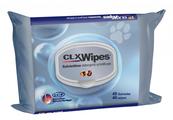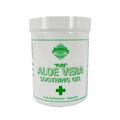Just like us, our pets can be allergic to things they are exposed to. This can include allergies to pollen, food and even dust mites. In fact research shows that just over 1 in 10 dogs and cats have allergic skin disease in some form!
Below is a summarised guide of how to spot and approach the problem.
What are the signs of allergies in animals?
These can vary greatly between animals, but usually consist of 2 or more of the following:
-
Recurrent ear infections
-
Generalised excessive licking/itching; specific areas in dogs include multiple feet/ears or their rear, while cats tend to overgroom their back/body
-
Recurrent anal gland problems (dogs)
-
Vomiting and/or diarrhoea, or just soft stools
-
Recurrent skin infections
What should I do if I suspect allergies?
Firstly contact your vet to diagnose the problem. There can be many causes that need to be ruled out. The approach to allergies is quite a long one and it is worth knowing this is the problem before going down the treatment route. Your vet can also treat any secondary infections which need to be sorted first before approaching the allergies.
How are allergies treated?
Ideally the cause of the allergy should be ruled out and removed from your pet's life to prevent the problem. This process is explained later under ‘How are allergies prevented’.
If you are wanting to relieve your pet’s itching then the following treatments can help. These are especially useful if the allergy is seasonal or doesn’t last long and you are ok to just treat the signs for short periods rather than work out the underlying cause:
-
Prescription anti-itching medications
These include the active ingredients Oclacitinib, Lokivetmab, Ciclosporin and Prednisolone/Dexamethasone steroid medcations. There are various brands available and you will need a written prescription from your vet to purchase these, but they are very effective at stopping the itch if used correctly.
-
Skin support supplements
These help support the normal skin barrier function, aiming to prevent the thing your pet is allergic to being able to cause a reaction. Good examples include EpiGlow, YuDerm itching dog, Allerderm Spot On and Coatex.
-
Skin support shampoos
These help soothe the inflamed sore skin and also provide nutritional support to the skin barrier. There are a few brands available; Duoxo Calm, Allermyl and DermAllay.
How are allergies prevented?
You ideally should find out the ‘allergen’ that affects your pet and prevent exposure to it, as this is what sets off the allergy. This is best done with a logical approach. Below is an advised step-by-step approach:
-
Rule out parasites - have a good flea/worming plan
Fleas are the most common cause of allergies in cats, so it is advised that your pet should be covered for fleas, lice, mites and roundworms/tapeworms. Unfortunately only prescription preventatives will cover mites but it is worth investing in them if your pet is allergic.
Spot-on products are preferred as these can have slight repellent properties, preventing a parasite biting your pet and triggering the allergy.
If you cannot afford prescription preventatives then over the counter alternatives include the following:
Flea/lice preventatives include Advantage or Seresto.
Wormers include TermaWorm or Dronspot.
2. Rule out food allergens - perform a food trial
This involves feeding a diet that your pet is not allergic to for 8 weeks (the time it takes for any previous food to completely leave the body). If the signs of the allergy stop after this then you can be pretty confident it is food-related. If the signs continue then you can rule out food altogether.
The easiest way to do this is with a hydrolysed protein prescription diet such as Purina HA, Royal Canin Anallergenic or Hills Z/D. These are specially formulated so your pet cannot react to them no matter what the original protein source was. They are complete diets that your pet can stay on for their entire life if needed.
Once you have diagnosed the allergy as food-related then you can trial cheaper diets that contain proteins your pet has never had before to see what your pet can cope with, for example venison or duck. If signs recur then you can switch back to the hydrolysed protein diet and start trialling other foods when this settles down again.
**Top Tip** It is important that once the food trial has started, these should be the only diets fed. Any treats/scavenging will interfere with the trial. This can be difficult for cats that free roam.
3. Rule out environmental allergens
Once parasites and food are ruled out as causing the allergy, you are left with a wide variety of possible environmental causes. The way to work out these is with allergy testing performed by your vet. This comes in the form of blood or skin tests. Once this is done then you can exclude the environmental allergen that the results highlight.
Sometimes this is impossible though (e.g. grass allergies) and your vet can order ‘allergy vaccines’ based on your test results. These contain small amounts of what your pet is allergic to that can be injected every 2 to 4 weeks to prime the immune system to get used to the allergen and so reduce the reaction.
Allergy vaccines usually need to be repeatedly injected for the entire life of your pet, but are a much better alternative than repeated use of anti-itching medications that can have side effects.
Don’t worry and keep trying!
Allergies in pets can be really frustrating. The most important thing is to keep persisting to work out the cause and what treatment plan works best for your pet. Some allergies may be so mild that you are happy coping with the signs and using supplements to prevent severe reactions. If you have any specific allergy questions then please contact us on [email protected] and we would be happy to help.
Written by: Dr. Nick Garside BVetMed MRCVS








